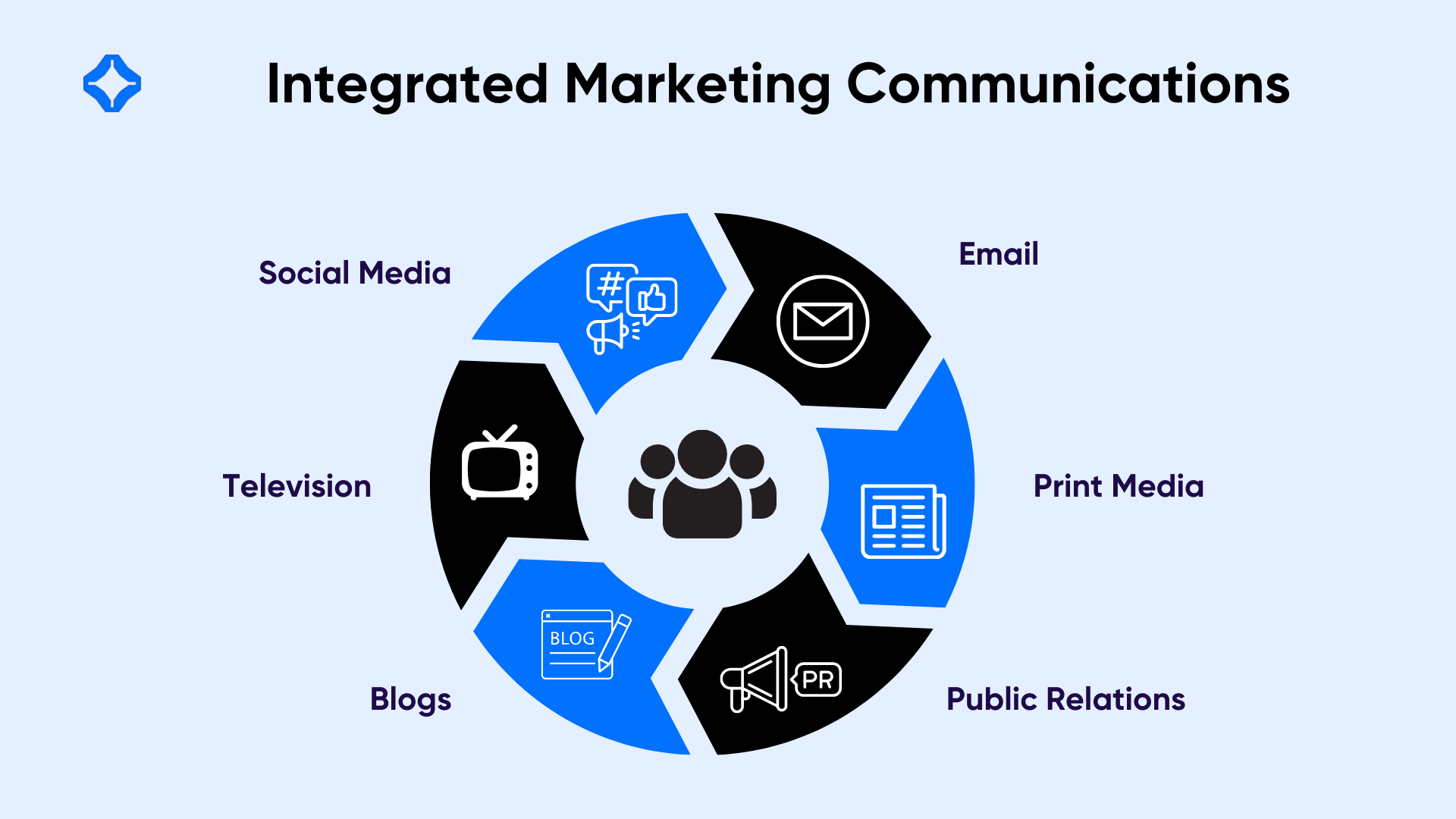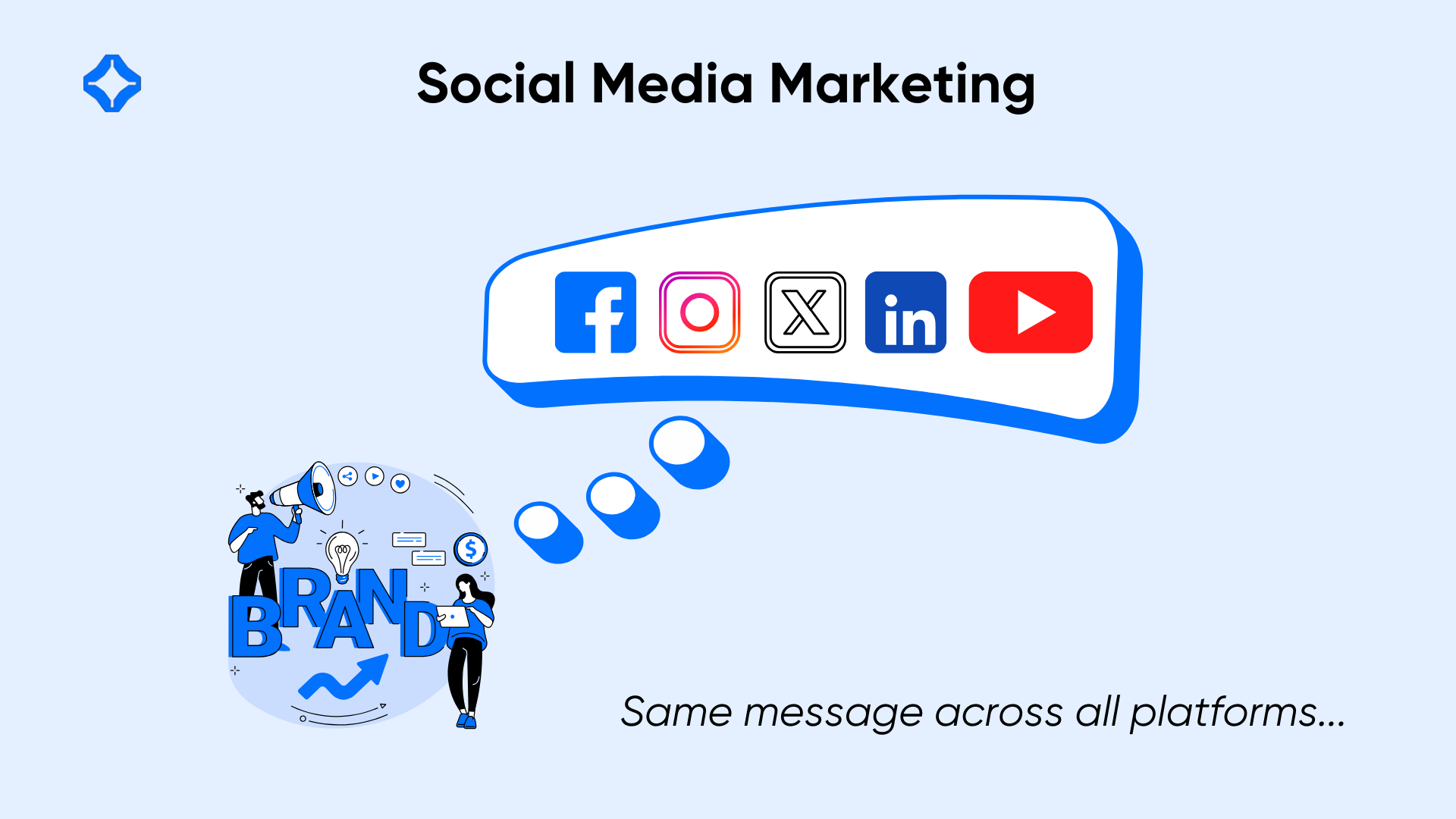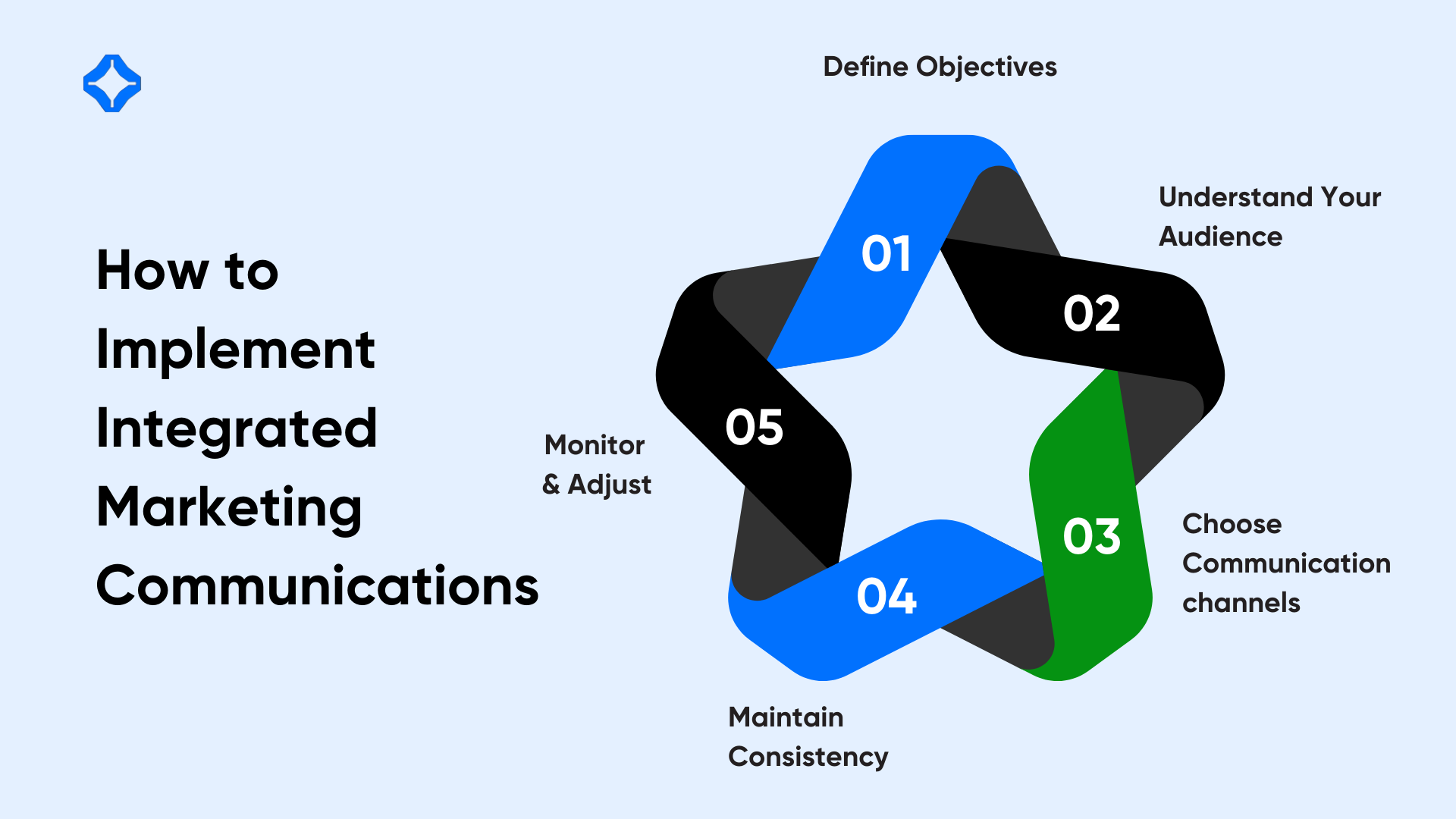Integrated Marketing Communications (IMC) is a strategic approach that aligns multiple marketing channels to deliver a consistent brand message. The term integrated marketing communication reflects the practice of unifying platforms like social media, email, public relations, and advertising into one cohesive strategy.
IMC helps create a seamless experience for customers, whether they’re interacting online or offline. By integrating marketing efforts, businesses can enhance brand recognition, build stronger customer relationships, and optimize their marketing resources.
Let’s dive deeper into its importance and how it works.
Why is Integrated Marketing Communication Important?
The importance of integrated marketing communications (IMC) lies in its ability to overcome modern marketing challenges and deliver consistent, impactful messaging across channels. Here’s how IMC helps businesses achieve success:
1. Consistency Across Channels

Integrated marketing campaigns ensure that customers encounter the same message, no matter how they interact with the brand—whether through social media, email, or TV advertising.
This Consistency reinforces brand recognition, establishes trust, and enhances customer confidence in the company. For example, a strong integrated marketing strategy ensures that a slogan or theme is recognizable on every platform, creating a unified experience.
2. Enhanced Customer Engagement
A well-planned integrated marketing plan creates seamless transitions across platforms, enhancing the overall customer journey.
For example, a campaign that blends digital ads with in-store promotions ensures customers feel connected to the brand throughout their interaction. This approach highlights the role of marketing integration in delivering a united brand experience, resulting in stronger customer engagement.
3. Cost Efficiency
An integrated marketing communication strategy streamlines marketing efforts, eliminating redundancies and improving resource allocation. Businesses can coordinate their campaigns more effectively, saving both time and money.
IMC tools, such as Customer Relationship Management (CRM) systems, allow for more efficient targeting and execution, ensuring campaigns deliver maximum ROI.
4. Increased Brand Loyalty
Consistency in messaging builds brand loyalty over time. A unified IMC campaign cultivates trust and reliability, encouraging customers to return and support the brand.
By delivering clear, relevant, and personalized messages, integrated marketing communication strengthens the relationship between the brand and its audience, transforming occasional buyers into loyal customers.
Integrated marketing communications is more than a marketing tool—it’s a strategy that ensures every communication contributes to building a cohesive, impactful brand presence.
Key Components of Integrated Marketing Communications
Effective integrated marketing communications (IMC) rely on a combination of tools and techniques that work together to deliver a consistent message across platforms. Below are the primary components of a successful IMC program:
1. Advertising
Advertising is a cornerstone of integrated marketing communication, utilizing paid media such as TV, print, and online ads to capture attention and raise awareness. A well-coordinated integrated advertising campaign ensures that every ad aligns with the overall integrated marketing strategy, reinforcing the brand’s message at each stage.
2. Public Relations (PR)
Public relations (PR) is integral to shaping public perception and maintaining credibility. Through media coverage, press releases, and events, PR enhances the brand’s reputation. As part of integrated marketing and communications, PR ensures that earned media complements the broader integrated marketing plan for a united approach.
3. Social Media Marketing

Social platforms like Instagram, LinkedIn, and Facebook are powerful tools for integrated marketing strategies. Adding AI chatbots to social media pages gives real-time customer support, aligning with IMC goals. These platforms amplify messages, foster real-time interactions, and encourage audience engagement. Consistency across these channels is important to creating a unified voice in an integrated marketing campaign.
4. Direct Marketing
Direct marketing tools like email campaigns, SMS, and telemarketing enable businesses to target specific customer segments directly. These personalized approaches ensure relevance, making direct marketing an important element in the IMC process. They complement other methods by providing a tailored experience for individual customers.
5. Content Marketing
Content marketing encompasses blogs, videos, infographics, and other creative materials designed to engage and educate audiences. These tools are central to integrated marketing communication strategies, delivering value while reinforcing the brand’s identity.
For example, a blog post can echo themes found in an ad or social media campaign, ensuring Consistency.
6. Sales Promotions
Discounts, loyalty programs, and giveaways drive immediate action. By aligning these incentives with the broader IMC campaign, businesses ensure a seamless customer experience. Sales promotions attract new customers and also support brand loyalty efforts.
These components of integrated marketing communications work jointly to deliver consistent and impactful messaging. By combining these tools in a strategic manner, businesses can optimize their integrated marketing campaigns, engage their audience, and achieve their marketing goals.
Examples of Integrated Marketing Communications
1. Coca-Cola’s “Share a Coke” Campaign
This iconic campaign replaced Coca-Cola’s logo with popular names on bottles. It combined digital marketing, social media, and in-store promotions, making it a perfect case study of integrated marketing campaigns.
2. Nike’s “Just Do It”
Nike’s slogan demonstrates the power of integrated brand marketing. From ads to social media posts, the consistent message inspires athletes globally.
3. Apple’s Product Launches
Apple integrates PR, digital marketing, and retail experiences seamlessly. Their product launch events demonstrate a successful integrated communication strategy.
How to Implement Integrated Marketing Communications
Implementing a successful integrated marketing communications (IMC) strategy requires a clear roadmap and collaboration among teams.

1. Define Objectives
Start by clarifying your goals, such as increasing brand awareness, generating leads, or driving sales. Establishing measurable objectives is critical for building a focused, integrated marketing plan. For example, an IMC strategy aimed at lead generation might prioritize tools like email marketing and social media campaigns.
2. Understand Your Audience
To succeed with integrated marketing communication, you must know your target audience. Leverage IMC tools like analytics platforms to study customer behavior, preferences, and pain points.
Customize your messaging to address their needs and align with their journey. For example, using direct marketing tactics such as personalized email campaigns can effectively engage specific audience segments.
3. Select the Right Communication Channels
Choose the right communication channels where your audience is most active. A strong integrated marketing communication plan often includes a mix of platforms like social media, public relations, and content marketing. For example, pairing social media marketing on platforms like Instagram with PR campaigns ensures a cohesive approach that maximizes reach.
4. Maintain Consistency
Consistency is the backbone of an effective IMC campaign. Ensure that visuals, tone, and messaging are uniform across all channels. This alignment builds trust and reinforces your brand’s identity. Whether it’s an integrated advertising campaign or a content marketing initiative, every element should contribute to a unified brand voice.
5. Monitor and Adjust
Tracking performance is important to refine your integrated marketing strategies. Measure key metrics like engagement rates, conversion rates, and ROI. CRM systems and analytics platforms assist in evaluating the success of your campaigns. Use these insights to tweak your approach and improve future IMC campaigns.
By following these steps, businesses can implement a robust integrated marketing communication strategy that matches their target audience. A well-executed IMC program brings Consistency, improves audience engagement, and ultimately drives long-term success.
The Benefits of Integrated Marketing Communications
The advantages of adopting integrated marketing communications (IMC) extend beyond traditional approaches, offering meaningful value for businesses aiming to build strong brands and customer relationships. Here’s how IMC strategies drive success:
1. Deeper Insights Through Unified Data
IMC consolidates data from multiple channels, offering a holistic view of customer behavior. Instead of isolated metrics, businesses gain a complete understanding of how audiences interact across platforms, enabling precise decision-making.
2. Prevention of Mixed Messaging
Integrated marketing communication eliminates the risk of contradictory messages appearing on different platforms. For example, if your email campaigns promote sustainability, your ads and PR efforts will reinforce the same theme, protecting brand integrity.
3. Fosters Internal Collaboration
IMC bridges gaps between teams in areas such as marketing, sales, and customer support. By aligning objectives and strategies, businesses create a unified internal culture that ensures all departments contribute to the same overarching goals.
4. Enhanced Innovation Opportunities
IMC encourages creative thinking by combining diverse channels like integrated advertising, social media, and experiential marketing. Teams can experiment with cross-channel campaigns, such as pairing influencer marketing with real-time event activations, generating innovative ways to engage audiences.
5. Cross-Generational Appeal
An integrated approach enables customized messaging for different demographics while maintaining a unified brand voice. For example, a brand might use TikTok for Gen Z and LinkedIn for professionals, ensuring both groups perceive the brand consistently.
6. Improved Crisis Management
In times of negative publicity or product recalls, IMC ensures that a coordinated response is delivered across all channels. For example, a SaaS helpdesk centralizes customer complaints, ensuring a unified response that upholds your brand message.
7. Better Scalability for Growing Brands
MC strategies offer natural scalability, allowing businesses to enter new markets or launch products while maintaining alignment with their existing brand identity.
8. Encourages Advocacy Marketing
IMC strategies, when executed effectively, turn customers into brand advocates. Through consistent and engaging communication across platforms, businesses inspire loyal customers to share their experiences, growing reach organically.
Conclusion
Integrated Marketing Communications (IMC) is the pillar of modern marketing success. It empowers businesses to seamlessly connect with their audience, ensuring every interaction adds value and reinforces the brand’s identity.
Beyond just aligning efforts across channels, IMC develops deeper connections, adaptability, and innovative storytelling. In an era of scarce customer attention, an effective IMC strategy doesn’t just make your brand visible. It makes it unforgettable.
FAQs
Integrated Marketing Communications (IMC) is a strategic approach that aligns multiple marketing channels to deliver a consistent brand message.
In marketing, IMC stands for Integrated Marketing Communications, emphasizing the unification of advertising, PR, and digital tools.
Integrated marketing communications ensure Consistency, improve engagement, and improve ROI by coordinating efforts across channels.
Examples include Coca-Cola’s “Share a Coke,” Nike’s “Just Do It,” and Apple’s product launches.
Start by defining goals, understanding your audience, and selecting appropriate channels. Ensure consistency and track results to refine your approach.